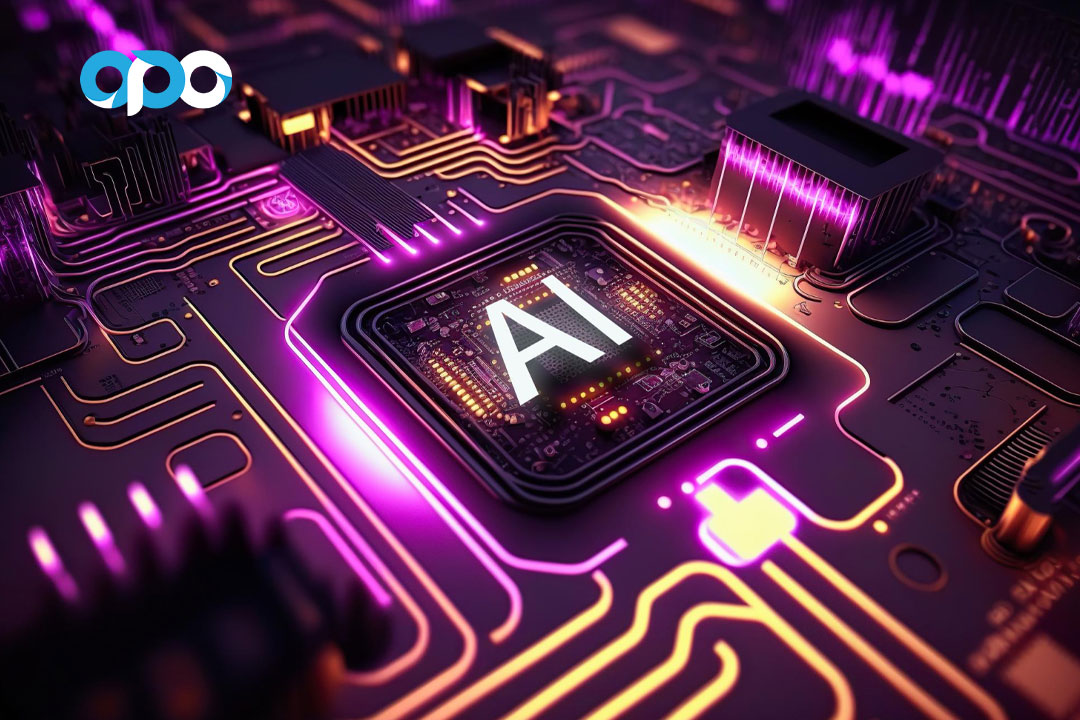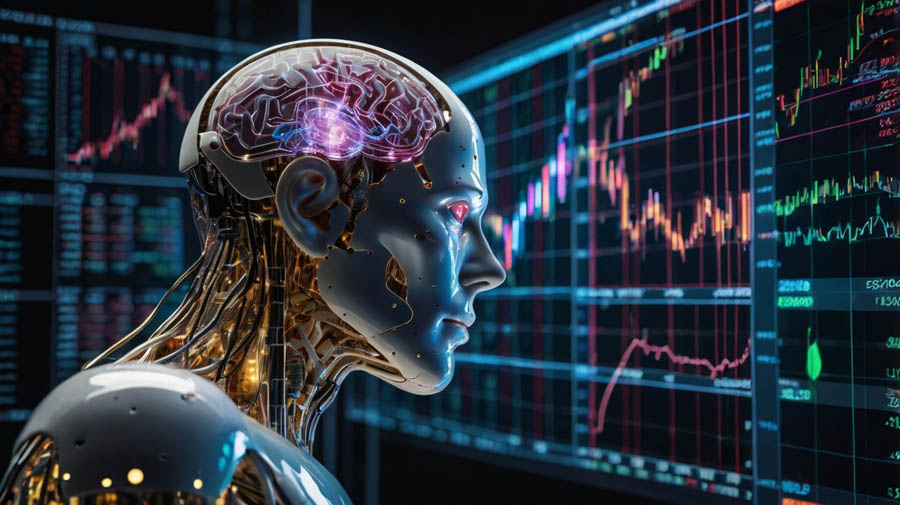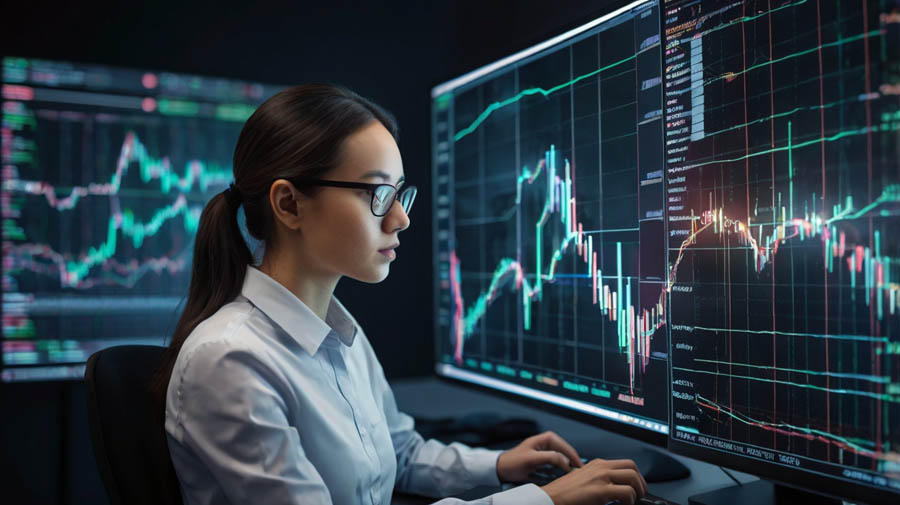In recent years, the fusion of artificial intelligence (AI) with forex trading has revolutionized how traders approach the market. This article delves into the intricacies of trading forex with AI, offering a detailed guide on understanding AI in forex, its benefits, getting started, and important considerations. By collaborating with a reliable broker for forex trading, you can effectively harness the power of AI tools to optimize your trading strategies. By the end, you’ll have a robust understanding of how to leverage AI for forex trading and make informed decisions.

Understanding AI in Forex Trading
What is AI and How Can it be Used in Forex?
Artificial Intelligence (AI) refers to the simulation of human intelligence in machines designed to think and act like humans. In forex trading, AI is employed to analyze vast amounts of data, identify patterns, and make trading decisions with minimal human intervention. The primary uses of AI in forex include:
- Data Analysis: AI algorithms process historical and real-time market data to detect trends and predict future movements.
- Signal Generation: AI systems generate trading signals based on sophisticated algorithms and statistical models.
- Automated Trading: AI can execute trades automatically based on pre-set criteria, ensuring timely and efficient transactions.

Limitations of AI Trading
While AI offers numerous advantages, it’s essential to understand its limitations:
- Not a Guaranteed Path to Riches: AI trading systems are not foolproof. Market conditions can change rapidly, and AI algorithms may not always adapt perfectly.
- Data Dependency: The effectiveness of AI relies heavily on the quality and quantity of the data it is trained on.
- Overfitting: AI models may perform well on historical data but fail to generalize to future market conditions.
Benefits of AI-assisted Forex Trading
Backtesting Strategies at Scale
AI enables traders to backtest multiple strategies simultaneously, using historical data to evaluate their effectiveness. This process helps in refining strategies and improving their chances of success in real-time trading.

Identifying Complex Patterns
Human traders might miss subtle and complex patterns in market data, but AI excels at detecting these. By recognizing these patterns, AI can predict price movements more accurately.
Faster Analysis and Execution
AI systems can analyze vast amounts of data and execute trades at lightning speed, far surpassing human capabilities. This speed advantage is crucial in the fast-paced forex market, where timing is everything.
Potential for Removing Emotional Bias
Emotional decision-making is a common pitfall in trading. AI systems, however, operate based on data and algorithms, eliminating the influence of emotions and ensuring more rational trading decisions.
Read More: Forex Trading Books for Beginners
Getting Started with AI Forex Trading
Embarking on AI-assisted forex trading involves several steps: choosing an AI trading platform, understanding platform features, and setting up your AI trading strategy. These steps ensure a smooth transition into AI-driven forex trading.

Choosing an AI Trading Platform
Selecting the right platform is crucial. Consider:
- Fees: Look for transparent pricing and compare subscription and transaction fees.
- Customization Options: Ensure the platform allows for tailoring AI tools to your strategies.
- Reliability: Choose established platforms with positive reviews and a proven track record.
- User Interface: Opt for a user-friendly interface for efficient trading.
- Security: Ensure robust security measures like two-factor authentication and encryption.
AI Tools for Trading
- Kavout: AI-powered trading with machine learning and data analytics.
- Trade Ideas: Real-time market analysis and AI-generated trading signals.
- EquBot: Uses IBM Watson for AI-driven market analysis.
- Alpaca: API-driven platform with AI tools for algorithmic trading.
- QuantConnect: Cloud-based with extensive market data and multi-language support.
- TuringTrader: Focuses on quantitative analysis with AI-driven tools.
- ChatGPT (via Custom Integration): Natural language processing for market insights and sentiment analysis.
Understanding Platform Features
- Signal Generation: AI-generated trading signals based on market data analysis.
- Automated Execution: Automatic trade execution based on AI signals.
- Backtesting Tools: Test strategies with historical data.
- Market Analysis: Tools for sentiment analysis, technical indicators, and economic calendars.
- Risk Management: Features like stop-loss orders and position sizing calculators.
Setting Up Your AI Strategy
- Define Risk Parameters: Set maximum loss per trade and capital risk percentage.
- Align with Your Trading Style: Ensure AI strategies match your trading approach.
- Select Appropriate Algorithms: Choose algorithms suited to your goals and market conditions.
- Set Up Trade Criteria: Define entry and exit conditions for trades.
- Regular Monitoring and Adjustment: Continuously monitor performance and adjust strategies as needed.
Practical Example
- Choosing a Platform: Use Kavout for AI-driven market analysis, MT5 for trade execution, and Trade Ideas for real-time analysis.
- Understanding Features: Combine predictive analytics and signal generation from Kavout with Trade Ideas’ real-time signals and MT5’s trading functionalities.
- Defining Risk Parameters: Set risk tolerance (e.g., 2% capital risk per trade) and configure accordingly in Kavout.
- Aligning with Your Trading Style: Configure Kavout for day trading with intraday price movements.
- Setting Up Trade Criteria: Use moving average crossovers and RSI indicators for trade entries and exits.
- Integrating with MT5: Automate trade execution on MT5 based on signals from Kavout and Trade Ideas.
- Monitoring and Adjusting: Regularly review performance and adjust strategies to optimize results.
By leveraging the strengths of platforms like Kavout, Trade Ideas, and MT5, traders can make informed decisions and execute trades efficiently in the AI-assisted forex trading landscape.
Read More: Top Forex Trading Books for Professionals
How AI Models are Trained for Forex Trading
Overview of Data Collection and Preprocessing
Training an AI model for forex trading begins with data collection. Historical market data, including price movements, trading volumes, and economic indicators, is gathered from reliable sources. Preprocessing this data involves cleaning, normalizing, and organizing it into a format suitable for training AI models.

Training and Validating AI Models
Once the data is prepared, it is used to train AI models through machine learning techniques. These models learn to identify patterns and make predictions based on the input data. Validation involves testing the models on separate datasets to evaluate their accuracy and effectiveness.
Importance of Continuous Learning and Model Updating
Financial markets are dynamic, and AI models must adapt to changing conditions. Continuous learning and periodic model updates ensure that AI systems remain effective and can handle new market scenarios.
Essential Considerations and Common Pitfalls in AI Forex Trading
Integrating artificial intelligence (AI) into forex trading can offer numerous advantages, but it’s crucial to approach this technology with a clear understanding of its limitations and potential pitfalls. This section covers the essential considerations you need to keep in mind and common pitfalls to avoid to ensure a successful and sustainable AI-driven trading strategy.
AI is a Tool, not a Replacement
AI should be seen as a powerful tool to enhance your trading capabilities, not a substitute for your own trading knowledge and expertise. Continuously develop your understanding of the forex market and stay updated with market trends and news. Combining AI insights with your experience will lead to more informed and balanced trading decisions.
Paper Trading and Backtesting
Before committing real capital to AI-driven trades, engage in paper trading and thorough backtesting. Paper trading allows you to test AI-generated signals in a risk-free environment, helping you understand the system’s effectiveness and reliability. Backtesting involves running AI strategies on historical data to evaluate their performance and refine them for better results.
Risk Management is Still Crucial
Even with advanced AI systems, risk management remains a fundamental aspect of trading. Implement robust risk management practices to protect your capital and minimize losses:
- Set Stop-Loss Orders: Predetermine exit points to limit potential losses.
- Manage Position Sizing: Allocate appropriate portions of your capital to each trade, avoiding overexposure to any single position.
- Diversify Your Portfolio: Spread your investments across different assets to mitigate risks.
Understanding AI Biases
AI systems are only as good as the data they are trained on. Be aware of potential biases in the training data, which can skew AI predictions and results. Ensure that the data used to train your AI models is diverse and representative of various market conditions to reduce the risk of biased outcomes.
Over-reliance on AI Systems
Relying solely on AI for trading decisions can lead to significant losses. It’s essential to combine AI-generated insights with your market knowledge and trading strategies. Maintain a balanced approach, using AI as an aid rather than the sole decision-maker.
Misinterpreting AI Signals
Understand the basis of AI-generated signals and how they are derived. Misinterpreting these signals can result in poor trading decisions. Take the time to learn about the algorithms and methodologies behind the AI system to use it effectively.
Managing Technical Issues and Glitches
Technical issues can disrupt AI trading, leading to missed opportunities or unintended trades. Regularly monitor your AI systems for performance and reliability. Have contingency plans in place to handle technical glitches, ensuring that your trading operations remain smooth and efficient.
Inadequate Risk Management
Neglecting risk management can result in substantial losses, even with an advanced AI system. Implement and adhere to strict risk management protocols to protect your investments and ensure long-term trading success.
Read More: Forex Diversification Strategies
Integrating AI with Other Trading Strategies
Incorporating artificial intelligence (AI) into your forex trading toolkit can enhance the effectiveness of your trading strategies. By blending AI with other traditional and modern trading methods, you can create a more robust, diversified approach that leverages the strengths of both human intuition and machine precision. This section delves into how you can integrate AI with fundamental analysis, technical analysis, and hybrid strategies to optimize your trading performance.

Combining AI with Fundamental Analysis
Fundamental analysis involves evaluating the intrinsic value of a currency by analyzing economic indicators, geopolitical events, and financial statements. AI can significantly enhance this approach by processing and interpreting vast amounts of data quickly and accurately.
- Economic Indicators: AI algorithms can analyze data from multiple economic indicators such as GDP, unemployment rates, and inflation figures. By identifying trends and correlations, AI can predict how these indicators might impact currency values.
- News and Sentiment Analysis: AI-powered tools can scan news articles, social media posts, and other online content to gauge market sentiment. Natural Language Processing (NLP) allows AI to understand the context and sentiment behind the text, providing insights into how news events may influence market movements.
- Geopolitical Events: AI systems can monitor global events and assess their potential impact on forex markets. By analyzing historical data, AI can predict how similar events have affected currency prices in the past, helping traders make informed decisions.
Using AI to Complement Technical Analysis
Technical analysis focuses on using historical price data, volume, and other statistical measures to predict future market movements. AI excels in this domain by identifying complex patterns and executing trades based on pre-defined criteria.
- Pattern Recognition: AI algorithms can detect intricate patterns in price movements that may be missed by human traders. These patterns can include head and shoulders, triangles, and Fibonacci retracements. By recognizing these patterns early, AI can generate timely trading signals.
- Automated Trading: AI can automate the execution of trades based on technical indicators. This reduces the lag time between signal generation and trade execution, ensuring trades are made at optimal moments.
- Backtesting and Optimization: AI enables comprehensive backtesting of technical strategies against historical data. This process helps in refining and optimizing strategies to enhance their performance in live trading environments.
Hybrid Approaches for Diversified Trading Strategies
A hybrid approach involves combining AI-driven insights with both fundamental and technical analysis to create a diversified trading strategy. This integration leverages the strengths of each method, providing a well-rounded perspective on market conditions.
- Comprehensive Market Analysis: By using AI to analyze both fundamental and technical data, traders can gain a holistic view of the market. This comprehensive analysis helps in making more informed decisions, balancing short-term opportunities with long-term trends.
- Risk Management: AI can assist in developing sophisticated risk management strategies. By continuously monitoring market conditions and adjusting positions accordingly, AI helps mitigate risks and protect capital.
- Dynamic Strategy Adjustment: Markets are constantly evolving, and strategies need to adapt accordingly. AI systems can be programmed to learn from new data and adjust trading strategies in real-time. This dynamic adjustment ensures that trading strategies remain effective under changing market conditions.
The Future of AI in Forex Trading
Predictions for the Next Decade
- Increased Adoption: More traders and institutions will adopt AI technologies.
- Advanced Algorithms: AI algorithms will become more sophisticated, improving prediction accuracy.
- Integration with Blockchain: AI and blockchain technology will combine to enhance transparency and security in trading.
Potential Advancements and Their Impacts
- Real-time Sentiment Analysis: AI will provide real-time insights into market sentiment by analyzing social media and news feeds.
- Improved Risk Management Tools: Advanced AI systems will offer better risk management solutions, helping traders minimize losses.
- AI-driven Marketplaces: Decentralized marketplaces powered by AI will emerge, allowing for more efficient and transparent trading.
Conclusion
Trading forex with AI offers numerous advantages, from faster analysis and execution to removing emotional bias. However, it’s essential to approach AI as a tool to enhance your trading, not a guaranteed path to success. By understanding its benefits and limitations, selecting the right platform, and implementing sound risk management practices, you can leverage AI to make more informed trading decisions. As AI technology continues to evolve, staying updated with the latest advancements will be crucial in maintaining a competitive edge in the forex market.
How do I ensure the AI trading system I choose is reliable?
Look for platforms with a solid track record, positive user reviews, and transparent operations. Avoid platforms that promise guaranteed profits, as these are often too good to be true.
Can AI predict forex market movements accurately?
AI can identify patterns and trends, improving prediction accuracy. However, no system can predict market movements with 100% certainty due to the inherent unpredictability of financial markets.
How much should I invest when starting with AI forex trading?
Start with a small amount you can afford to lose. As you gain confidence and understand the AI system’s performance, you can gradually increase your investment.
Are there risks involved in AI forex trading?
Yes, like any trading method, AI forex trading involves risks. It’s crucial to have a robust risk management strategy and not rely solely on AI for trading decisions.








One Response
Hello my loved one! I want to say that this article is amazing, great written and include approximately
all significant infos. I’d like to see more posts like this .